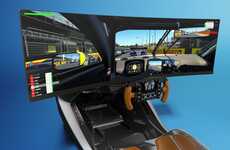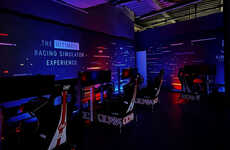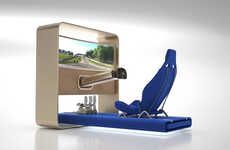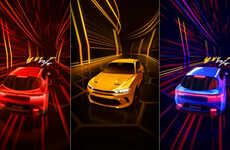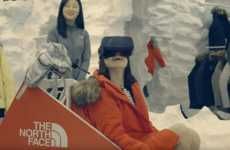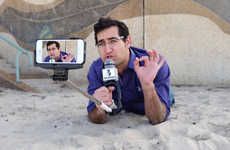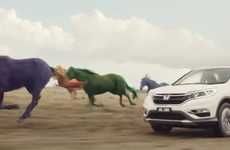
Honda's 'IndyCar Speed Simulator' Lets Users Speed Down Local Streets
Cadhla Gray — October 21, 2015 — Autos
References: d12dz69inw7f7d.cloudfront.net & psfk
An exciting collaboration between Honda, IndyCar and Google Maps has proven to foster great things -- a virtual racing experience that allows participants to speed down their own neighborhood in a race car.
Users simply go the to Speed Simulator site and type in an address they'd like to "drive" towards. The front of the race car appears on the computer screen and the images of the streets and buildings being driven past are generated by Google Maps. Once the destination is reached, an animated pit crew even changes the car's tires.
Not only is this a great publicity stunt for IndyCar, with a race ticket giveaway contest, it also generates excitement and publicity for Honda's brand. As the virtual racing experience garners the attention of Millennials, this gives the brand access to their addresses (when the destinations are entered) and emails if they enter the sweepstakes contest.
Users simply go the to Speed Simulator site and type in an address they'd like to "drive" towards. The front of the race car appears on the computer screen and the images of the streets and buildings being driven past are generated by Google Maps. Once the destination is reached, an animated pit crew even changes the car's tires.
Not only is this a great publicity stunt for IndyCar, with a race ticket giveaway contest, it also generates excitement and publicity for Honda's brand. As the virtual racing experience garners the attention of Millennials, this gives the brand access to their addresses (when the destinations are entered) and emails if they enter the sweepstakes contest.
Trend Themes
1. Virtual Racing Simulators - Virtual racing simulators are becoming more advanced, creating opportunities for immersive experiences in various industries.
2. Location-based Virtual Experiences - The use of location-based technology to create immersive virtual experiences is gaining popularity, with potential applications in gaming, tourism, and education.
3. Interactive Advertising Campaigns - Interactive advertising campaigns that incorporate virtual reality and gamification elements are increasingly effective at engaging younger audiences.
Industry Implications
1. Automotive - The automotive industry can incorporate virtual racing simulators into dealership and marketing experiences to attract younger customers and create brand loyalty.
2. Tourism - Tourism organizations can use location-based virtual experiences to create virtual tours of popular destinations for potential visitors.
3. Advertising - The advertising industry can create interactive campaigns using virtual reality and gamification elements to better engage younger audiences and create buzz for brands.
1.3
Score
Popularity
Activity
Freshness


